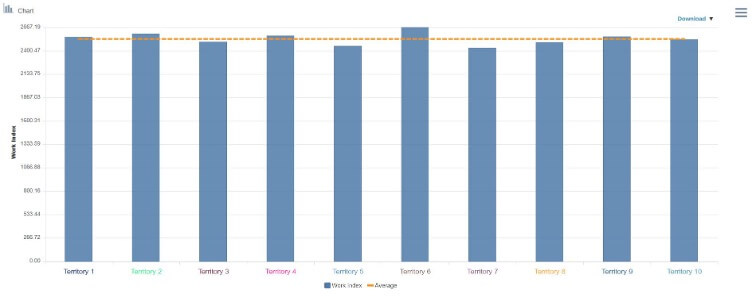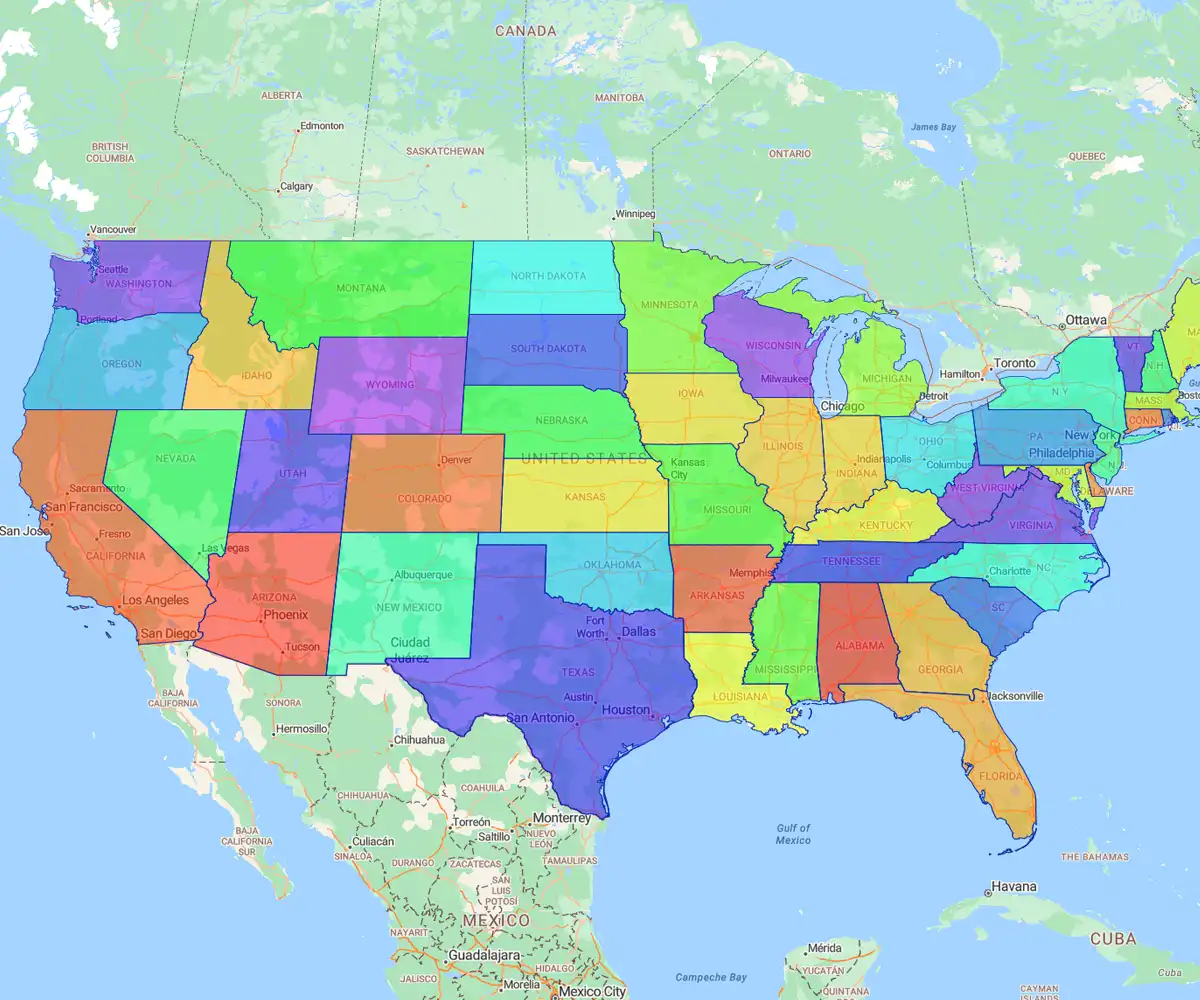Quick answer
Building smart, data-driven sales territories is a strategic way to boost productivity, improve resource allocation, and grow revenue efficiently. But it’s a complex process with many moving parts.
Key takeaways on how to build sales territories:
- Plan territories based on future potential, not just past performance
- Use data and mapping tools to identify customer clusters and high-value areas
- Balance workloads to match rep capacity and market opportunity
- Minimize travel by centering reps near dense customer zones
- Involve stakeholders early and refine regularly to reduce disruption and drive growth
What is a Sales Territory?
A sales territory is a clearly defined geographic area, group of customers, or market segment. It divides your market using inputs such as postcode, region, industry, or account type. Each territory is typically assigned to a rep or team responsible for managing relationships, growing revenue, and delivering service within that defined space.
Why Building a Sales Territory Plan Matters
A sales territory is the foundation for efficient, data-driven sales planning. It helps organize sales efforts, balance workloads, and plan territory expansion. eSpatial focuses on mapping territories visually, using territory management tools like zip code mapping and geographic overlays to:
-
Identify gaps or
overlaps in coverage -
Allocate resources fairly
-
Optimize routes and
reduce travel time -
Align sales strategy
with business goals
Steps to Build a Sales Territory From Scratch
Ready to design smarter territories? Follow these steps to learn how to build a sales territory from scratch using proven business mapping strategies.
Step 1
Crunch Your Numbers
Learning how to build a sales territory starts with collating and analyzing your sales and market data. Here is a sample of the data you'll need:
- Customer location data
- Competitor location data
- Sales potential data (we'll explain how to calculate this later)
- Demographics
- Sales opportunity data
- Product sales
- Customer historical sales
You are closest to your business, so you will have more knowledge of the best data sources to base your territory-building decisions. Organize it before you analyze it, and you'll improve results. Here is where mapping software excels. Use maps like heatmaps, color-coded maps, bubble maps, and territory maps to identify the areas with the best potential.

Step 2
Set Objectives
Whether building or growing sales territories, it is important that you define your objectives first. What do you want your sales territories to deliver?
- More customers
- Higher revenue
- Improved customer service
- New verticals
- Launch new products
- Regional market penetration
- Lower cost of sales
- Drive sales productivity
- Balanced and equitable alignments
What are your objectives?
Step 3
Focus on Balanced Workloads
The best approach to building territories is to consider a workload index. Some refer to it as effort. Put simply, you want the workload required to service your sales territories to be balanced with the quotas you set.
If you have a region that requires 3,000 hours of work (travel, call time, call duration time, planning, admin) to service all customers, but the maximum workload a rep can handle is 1,500 hours, you waste sales potential.
Your goal is to build territories with a balanced workload so your sales reps can optimize sales potential effectively and efficiently.

Step 4
Calculate Sales Potential
So, what is sales potential? Let's look at a simple example.
You build a sales territory and set a quota of $5,000,000 for your sales rep. But when you analyzed:
- Customer spend potential
- Competitor market share
- Prospect market spend
You calculate that the TAM (total addressable market) is closer to $20,000,000. Your market share goal is 35% or $7,000,000. That’s an additional $2,000,000 on top of your planned quota that would otherwise be missed.
Organizations often build sales territories on historical sales, but a better approach is to design sales territories with future sales potential in mind. Future-proof your growth and opportunity.
Read how Thermo Fisher uncovered $30,000,000 in untapped sales potential
Step 5
Segment Your Customers
Another important consideration in your territory design process is customer segmentation. Can you identify meaningful segments that offer your organization higher sales potential, a higher probability of success, and are an excellent fit for your products and support? Factors like:
- Are there geographic hotspots of ideal customers?
- Customer type
- Industry segment
- Purchasing trends
- Sales potential
- High growth
Spend time honing in on each geographic region's unique characteristics and needs.Understanding how to build a sales territory by focusing on segments will help you create sales territory designs that more closely match your business goals.

customers in a target vertical
Step 6
Eradicate Unnecessary Travel
Minimizing travel is another vital consideration as you develop your territory management process.
Avoid building a territory around a rep's current location (a common problem). When creating your alignments, you should focus on a weighted center. In other words, design your territory around clusters of customers and prospects. Place your reps in the center of activity, and by doing so, you reduce travel times and increase face-to-face time with customers.

or ideal locations for a field sales rep
Step 7
Salespeople's Experience
Another factor to consider is your sales representative's experience. For example, assign an experienced salesperson to more challenging areas, verticals, or markets. Or, with a new starter, give them a territory with 80% of the average workload for experienced team members.
As they gain more experience, you can realign their territory and assign more customers.
Step 8
Analyze Your Competition
As part of your data crunching, we suggest you create heatmaps or pin maps showing your competitor locations. You'll gain insight into their geographical strengths and weaknesses. It, in turn, will lead to better decisions on your sales resource allocation. You can strategically add more resources in areas where your competition is strongest.
Step 9
Product and Service Considerations
You may need to align your sales territories according to the product or service expertise of your sales and support teams. Some products and services may require greater levels of support. Some verticals may need SMEs (subject matter experts) near customers. Matching sales team skills and territory requirements can be instrumental in improving results.
Step 10
Avoid Disruption
Always involve your most important stakeholders from the beginning of your territory-building process. Sales, marketing, finance, HR, and operations will all be affected by your territory design choices.
For example, involving your sales managers and sales team can minimize disruption. You'll want to avoid alienating team members by reassigning customers to a new sales territory. And you'll want to protect your strongest customer relationships when you consider moving accounts or areas.
Sharing territory alignment scenarios with your team will minimize disruption.
Step 11
Test and Perfect
Your work is never done despite implementing the best practices outlined above and leveraging the best sales territory mapping software.
Continuous testing and refinement are essential. Salespeople leave. Customers close, get acquired, or move to competitors. Markets change. The economy moves in cycles. So, you should have a regular cadence where you review and perfect your alignments.
Step 12
Leverage the Power of Sales Territory Management Software
Depending on the size of your project, you might get the results you need using Excel and a basic map tool. But you will need powerful mapping software if you are serious about results and have a sales team numbering 50 or more.
Sales territory optimization, advanced maps, and route planning are the ultimate power-trio to consider. Build sales territories faster, more accurately, and unlock new revenue using the best available technology.
Check out our Conquering territory management guide.
Benefits of Creating Balanced
Sales Territories
Balanced sales territories do more than look good on a map; they drive performance. Here's why territory planning matters:
1. Increased productivity and quicker sales cycles
Balanced sales territories help reps focus on high-potential areas as precise boundaries eliminate overlap and wasted effort. Teams cut wasted travel, target the right accounts faster, and move deals through the pipeline more efficiently.
2. Better customer coverage and experience
Smarter territories put every customer within a rep's reach, and no pockets are left unmanaged. This leads to faster responses, more personalized service, and stronger customer relationships.
3. Fairer workload distribution across reps
Balanced territories prevent reps from being overloaded or underused. By aligning workload and opportunity, every team member has a fair shot at hitting targets.
4. Data transparency for managers and reps
A data-driven, well-defined territory strategy is the foundation for predictable growth. With eSpatial, territory data is visual, real-time, and shareable. Managers can track coverage and performance instantly, while reps see exactly where to focus next.
Final Thoughts on Sales Territories Design
Learning how to build a sales territory may feel like a complex process. But if you follow these best practices, you'll achieve better-balanced and optimized alignments.
You will gain a competitive edge by starting with your data, analyzing your markets and competitors, factoring in customer and rep locations, minimizing disruption, and leveraging sales mapping software. Ready? Take a look at our mapping software pricing.


